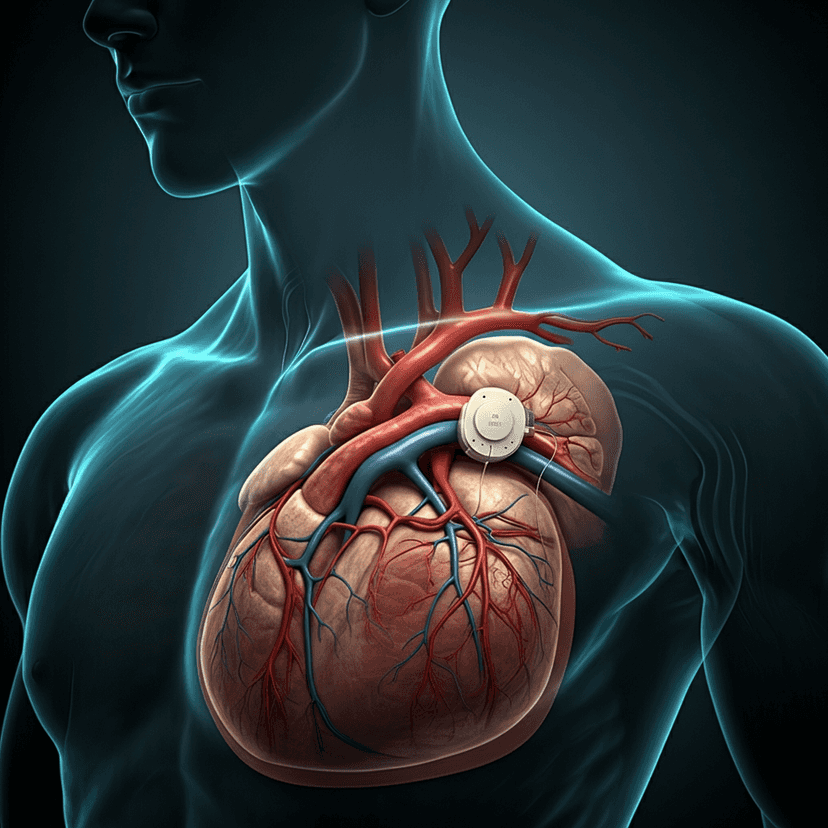الحزم تبدأ من
$2500
هل تحتاج إلى مساعدة في اختيار الحزمة المناسبة لرحلتك الطبية؟
بياناتك الصحية محمية معنا

تحويل الحياة بـ التدوير
تعتبر الدوران ، المعروف أيضًا باسم استئصال الشرايين الدوراني ، إجراءً غازيًا بسيطًا يستخدم لعلاج مرض الشريان التاجي الشديد عن طريق إزالة البلاك المتكلس من الشرايين. يتم استخدام هذا الإجراء عادة عندما تكون الأساليب التقليدية مثل رأب البالون أو الدعامات غير فعالة بسبب صلابة ومدى البلاك. يساعد الدوران على تحسين تدفق الدم إلى عضلة القلب ، وتخفيف الأعراض مثل ألم الصدر (الذبحة الصدرية) وتقليل خطر الإصابة بأدوات القلب.
نظرة عامة على الإجراء:
إعداد قبل الجراحة:
- تقييم طبي مفصل، بما في ذلك الفحص البدني، وتخطيط كهربية القلب (ECG)، ودراسات التصوير مثل تصوير الأوعية التاجية لتقييم مدى وموقع اللويحة.
- مناقشة التاريخ الطبي للمريض والأدوية الحالية وأي حساسية.
الخطوات الجراحية:
- تخدير: يتم إعطاء التخدير الموضعي في موقع إدخال القسطرة (عادة الفخذ أو الرسغ) ، وقد يتلقى المريض التخدير لمساعدتهم على الاسترخاء.
- إدخال القسطرة: يتم إدراج سلك التوجيه من خلال الشريان الفخذي أو الشعاعي ومتقدم إلى موقع الانسداد في الشريان التاجي.
- جهاز التدوير: يتم تطوير قسطرة مع لدغ الدوران عالي السرعة الماسي على سلك التوجيه إلى الانسداد.
- إزالة البلاك: يدور المثقاب بسرعات عالية (تصل إلى 200000 دورة في الدقيقة)، مما يؤدي إلى طحن اللويحة المتكلسة إلى جزيئات صغيرة (أصغر من خلايا الدم الحمراء) يتم غسلها بأمان في مجرى الدم.
- رأب الأوعية الدموية بالبالون/الدعامات: بعد التدوير، غالبًا ما يتم إجراء رأب الأوعية الدموية بالبالون و/أو الدعامة لفتح الشريان بشكل أكبر والحفاظ على تدفق الدم.
تحضير:
- التقييم الطبي: التقييمات الشاملة ، بما في ذلك دراسات التصوير والاختبارات المختبرية ، للتخطيط للإجراء.
- تعليمات ما قبل الجراحة: إرشادات بشأن الصيام وتعديلات الدواء (ه.ز., وقف مخففات الدم)، واستعدادات محددة قبل الجراحة.
- تقديم المشورة: مناقشة الإجراء والمخاطر المحتملة والنتائج المتوقعة مع الفريق الطبي.
استعادة:
- الإقامة في المستشفى: يبقى معظم المرضى في المستشفى لبضع ساعات حتى بين عشية وضحاها للمراقبة.
- رعاية ما بعد الجراحة: مراقبة وظيفة القلب ، وإدارة موقع الوصول ، واستخدام الأدوية الموصوفة لمنع التخثر.
- قيود النشاط: تجنب الأنشطة الشاقة لعدة أيام ، مع العودة التدريجية إلى الأنشطة العادية.
- متابعة: مواعيد المتابعة المنتظمة لمراقبة وظائف القلب والتأكد من بقاء الشريان مفتوحًا.
النتائج:
- فعالية: يعتبر التدوير فعالاً للغاية في علاج مرض الشريان التاجي الشديد والمتكلس، وتحسين تدفق الدم، وتخفيف الأعراض.
- التكهن: يعاني معظم المرضى من راحة كبيرة من الذبحة الصدرية وتقليل خطر النوبات القلبية.
- فوائد طويلة الاجل: تحسين نوعية الحياة، وزيادة القدرة على تحمل التمارين الرياضية، وتقليل الحاجة إلى التدخلات التاجية المستقبلية.
5.0
95% مصنف قيمة مقابل المال
لماذا تختارونا؟
99%
معدل النجاح
4+
التدوير الجراحين
0
التدوير
4+
المستشفيات في جميع أنحاء العالم
0
الحياة التي تم لمسها
نظرة عامة
تعتبر الدوران ، المعروف أيضًا باسم استئصال الشرايين الدوراني ، إجراءً غازيًا بسيطًا يستخدم لعلاج مرض الشريان التاجي الشديد عن طريق إزالة البلاك المتكلس من الشرايين. يتم استخدام هذا الإجراء عادة عندما تكون الأساليب التقليدية مثل رأب البالون أو الدعامات غير فعالة بسبب صلابة ومدى البلاك. يساعد الدوران على تحسين تدفق الدم إلى عضلة القلب ، وتخفيف الأعراض مثل ألم الصدر (الذبحة الصدرية) وتقليل خطر الإصابة بأدوات القلب.
نظرة عامة على الإجراء:
إعداد قبل الجراحة:
- تقييم طبي مفصل، بما في ذلك الفحص البدني، وتخطيط كهربية القلب (ECG)، ودراسات التصوير مثل تصوير الأوعية التاجية لتقييم مدى وموقع اللويحة.
- مناقشة التاريخ الطبي للمريض والأدوية الحالية وأي حساسية.
الخطوات الجراحية:
- تخدير: يتم إعطاء التخدير الموضعي في موقع إدخال القسطرة (عادة الفخذ أو الرسغ) ، وقد يتلقى المريض التخدير لمساعدتهم على الاسترخاء.
- إدخال القسطرة: يتم إدراج سلك التوجيه من خلال الشريان الفخذي أو الشعاعي ومتقدم إلى موقع الانسداد في الشريان التاجي.
- جهاز التدوير: يتم تطوير قسطرة مع لدغ الدوران عالي السرعة الماسي على سلك التوجيه إلى الانسداد.
- إزالة البلاك: يدور المثقاب بسرعات عالية (تصل إلى 200000 دورة في الدقيقة)، مما يؤدي إلى طحن اللويحة المتكلسة إلى جزيئات صغيرة (أصغر من خلايا الدم الحمراء) يتم غسلها بأمان في مجرى الدم.
- رأب الأوعية الدموية بالبالون/الدعامات: بعد التدوير، غالبًا ما يتم إجراء رأب الأوعية الدموية بالبالون و/أو الدعامة لفتح الشريان بشكل أكبر والحفاظ على تدفق الدم.
تحضير:
- التقييم الطبي: التقييمات الشاملة ، بما في ذلك دراسات التصوير والاختبارات المختبرية ، للتخطيط للإجراء.
- تعليمات ما قبل الجراحة: إرشادات بشأن الصيام وتعديلات الدواء (ه.ز., وقف مخففات الدم)، واستعدادات محددة قبل الجراحة.
- تقديم المشورة: مناقشة الإجراء والمخاطر المحتملة والنتائج المتوقعة مع الفريق الطبي.
استعادة:
- الإقامة في المستشفى: يبقى معظم المرضى في المستشفى لبضع ساعات حتى بين عشية وضحاها للمراقبة.
- رعاية ما بعد الجراحة: مراقبة وظيفة القلب ، وإدارة موقع الوصول ، واستخدام الأدوية الموصوفة لمنع التخثر.
- قيود النشاط: تجنب الأنشطة الشاقة لعدة أيام ، مع العودة التدريجية إلى الأنشطة العادية.
- متابعة: مواعيد المتابعة المنتظمة لمراقبة وظائف القلب والتأكد من بقاء الشريان مفتوحًا.
النتائج:
- فعالية: يعتبر التدوير فعالاً للغاية في علاج مرض الشريان التاجي الشديد والمتكلس، وتحسين تدفق الدم، وتخفيف الأعراض.
- التكهن: يعاني معظم المرضى من راحة كبيرة من الذبحة الصدرية وتقليل خطر النوبات القلبية.
- فوائد طويلة الاجل: تحسين نوعية الحياة، وزيادة القدرة على تحمل التمارين الرياضية، وتقليل الحاجة إلى التدخلات التاجية المستقبلية.





















